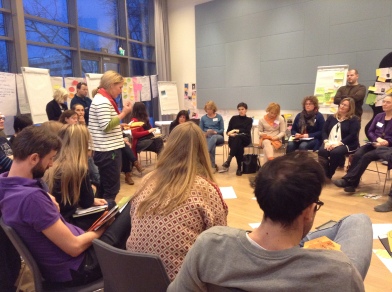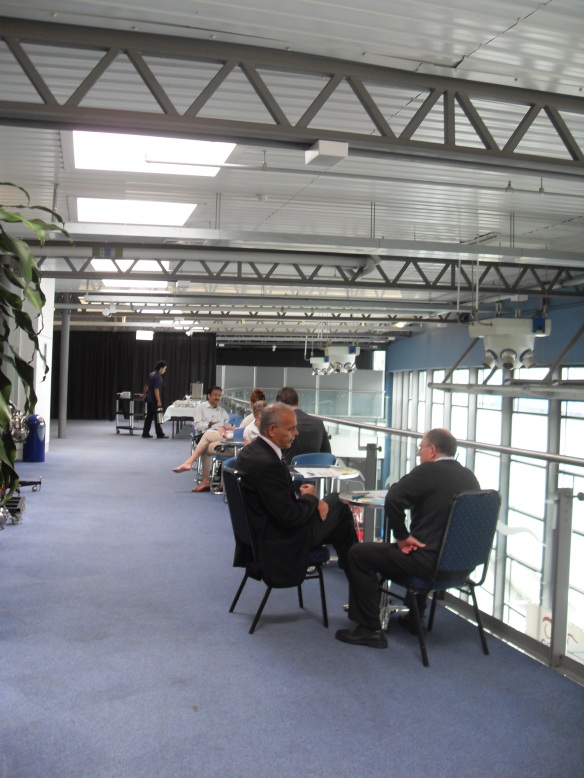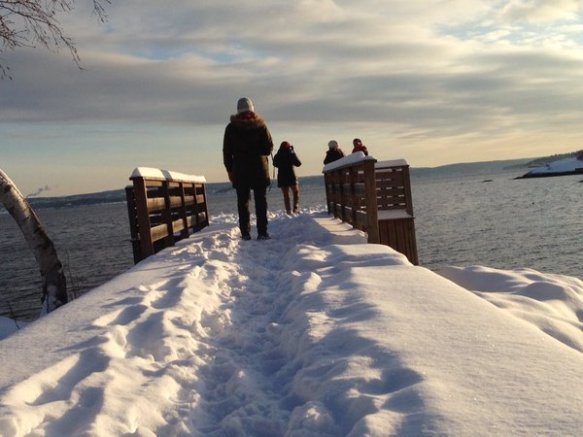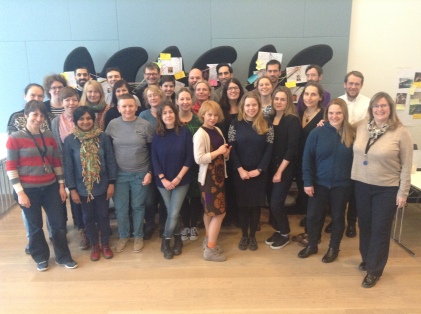Diverse skills working together in valuable ‘white space’
As Facilitators we enjoy the stretching challenges we encounter as we strive to help people by providing appropriate processes to achieve ambitious goals. Recently we have successfully provided facilitation in situations where people are engaging ways of working to elevate themselves out of their usual silos into valuable ‘white space’ to create breakthrough or ‘holistic’ solutions. We know there is both a need and benefit for people with diverse skills to work together in some form of ‘higher ground’ that could be called ‘white space’. Sometimes we call this process “Cathedral Thinking”.

Facilitators can help people to reach this white space, by providing well-thought through facilitation processes. These processes are designed so that people are enabled to explore, challenge and articulate a shared goal. We design ways to make sure that people really listen to, hear and understand each other, and then bridge through to working together to achieve progress towards the shared goal.
How can this happen? These four examples are great demonstrations of what I mean by facilitating in the white space:-
I worked with a newly appointed business manager, needing to turnaround an ailing company very quickly. The diagnosis was that there were many people, with excellent functional skills working in strong functions. However, in totality the overall business result was quite frankly abject mediocrity! Through a series of workshops we enabled people to envisage a ‘boundary-less organisation’ where the diverse, but potentially complimentary skills were welded together to achieve a successful, sustainable, robust business.
Another project was focused on constructing a brand new hospital. The traditional ways of working were at best transactional, more frequently adversarial. We invested time to share goals and perspectives and to form common goals. This process motivated everyone and helped people to understand each other’s potential contribution. Unprecedented levels of productivity resulted. It would be easy to assume that everyone just wanted to ‘make as much money as possible’. However when you delve deeper into the shared personal motivations there is far more at stake than this. The installers wanted to go home at the end of the working day without a sore back / neck (ergonomics). We heard stories from the factory workers wanting to go to Sunday morning sports with their children instead of being in the factory making rushed components desperately needed the next day. In practice, a well facilitated process enabled people to achieve their personal goals and make a successful project.
Another project exposed me to another circumstance where diverse skills needed to work together in this valuable white space to craft a comprehensive and robust solution to a very complex set of issues. In this case, an organisation had a need to design and implement a global process / system for dealing with and transparently reporting financial currency hedging. This programme had all the usual ingredients of establishing common goals. The critical factor in this project was the impact of language, and in particular the understanding of meaning and culture within the multi-national team of people. The facilitation processes had to invest time to carefully tease out perspectives. This meant that people were able to appreciate and value the background underlying those perspectives.
More recently, we facilitated an EPSRC sandpit, addressing the Nexus involving Water, Food and Energy. It was delightful to work with and facilitate a wide range of academic disciplines and stakeholders with differing perspectives. Our process supported the group to identify some approaches that transcended the whole topic and expertise in the room. Once again the facilitation processes were designed to enable people to explore, challenge and ultimately share a common goal. We encouraged people to value and connect diversity. The result was to create and articulate novel programmes in the ‘white space’.
This approach can also be seen currently in the world’s response to Ebola, using a ‘Systems Thinking’ perspective. As we start to see progress being made what is becoming clearer is that a diverse range of skills / organisations, including Governments, Armies; Community Leaders; Scientists; Pharmaceutical competitors; Medical professionals; Academics; Charities; came together to formulate and adapt a programme to tackle the situation. It will be enlightening to understand what learning can emerge (de contextualized) and how that learning might be reused to inform any situation where there may be a benefit to enabling a diverse group of skills to work together, to address a shared goal.
Increasingly we see that people, organisations, communities are facing up to challenges which may be most effectively addressed by moving outside and above boundaries into the ‘white space’ described here. In that space, people need to be helped to listen to each other, to understand each other’s language, context, perspective and drivers. Fortunately a professional, skilled Facilitator will be able to provide useful processes to enable this dialogue and engagement.
If you would like to explore ways of reaching upwards to the white space of Cathedral Thinking we would love to talk to you.
55.378051
-3.435973











